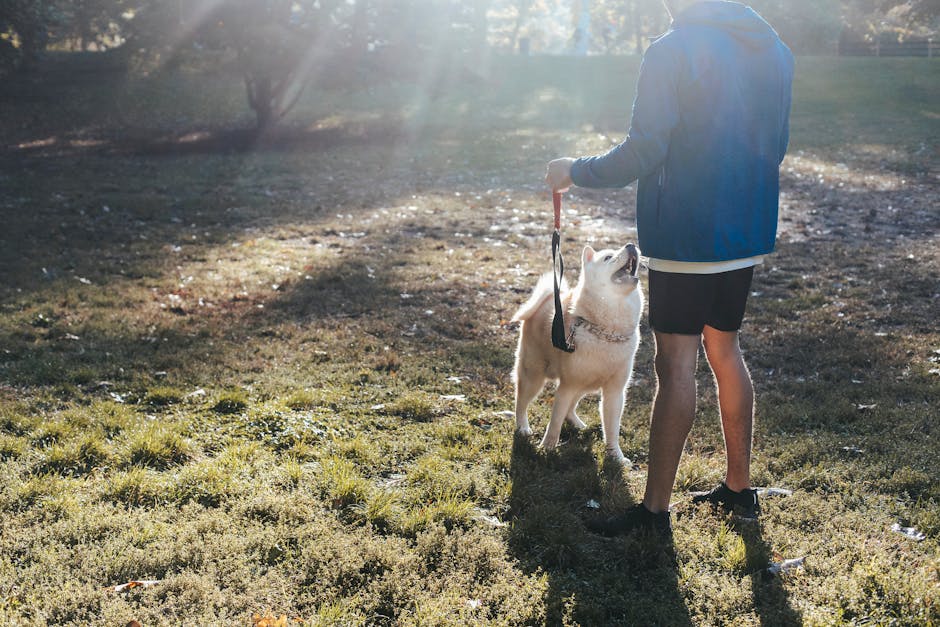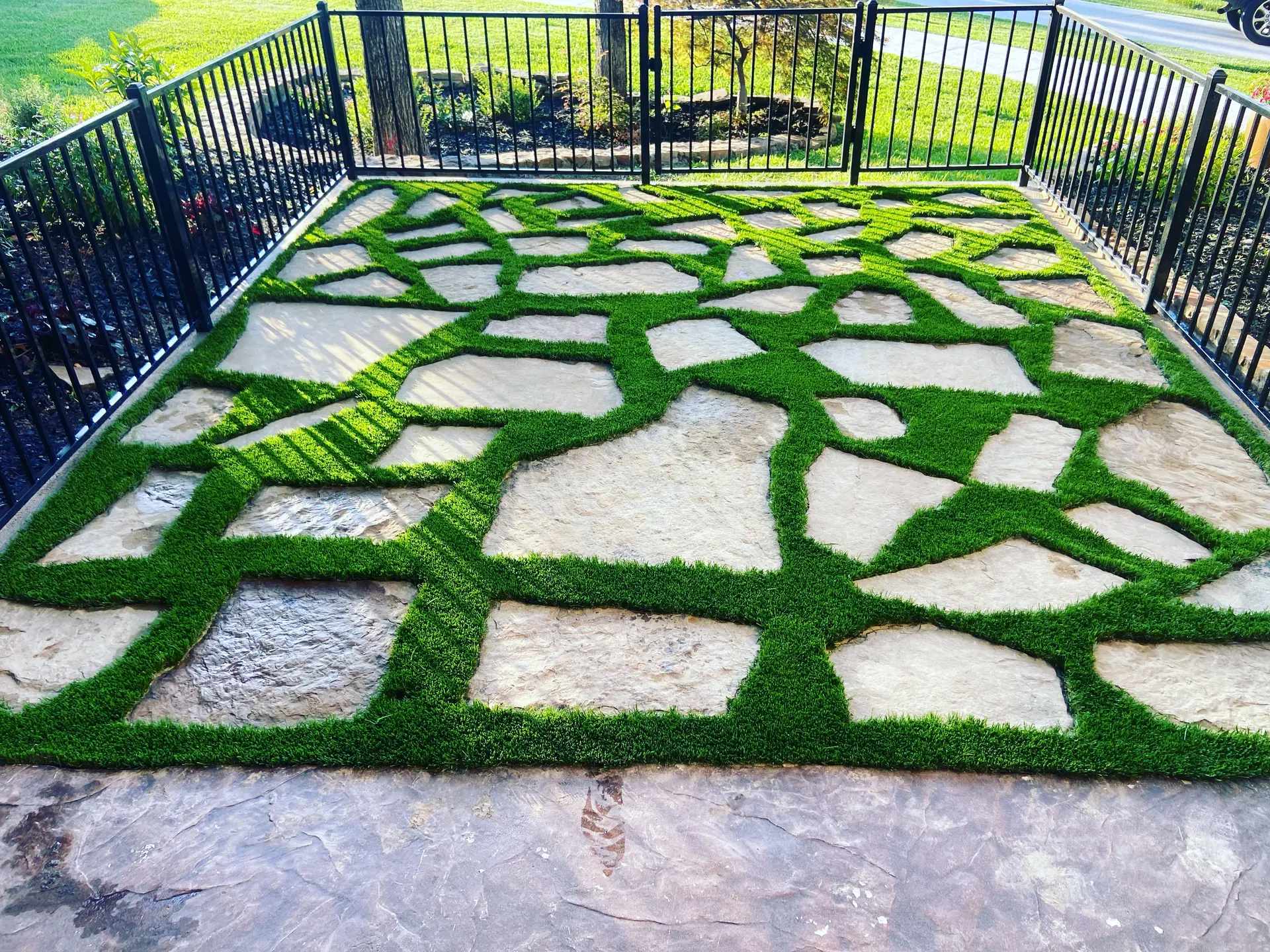
Introduction and Background
Urban environments constantly adapt to meet the needs of their growing populations, both human and animal. As cities expand, the availability of green spaces becomes increasingly limited, necessitating innovative solutions to maintain and enhance such vital areas. One approach that has gained traction is the integration of artificial grass into urban pet parks. This development addresses multiple challenges associated with natural grass and aims to improve the overall quality and utility of these communal spaces.
The concept of using artificial grass in pet parks is not new; however, its application has grown significantly in the past decade. Rapid urbanization and increased pet ownership have heightened the demand for durable, low-maintenance, and hygienic park surfaces. Traditional natural grass, while aesthetically pleasing, often falls short in heavily trafficked urban settings due to wear and tear, maintenance costs, and sanitary concerns.
Research indicates that artificial grass provides a viable alternative that can withstand the rigors of constant use without compromising the needs of pets and their owners. Studies show that synthetic turf can be engineered to mimic the look and feel of natural grass, creating a pleasant and functional environment for animals. Moreover, advances in materials science have enabled manufacturers to produce artificial grass with enhanced durability and drainage capabilities, critical for high-traffic areas like pet parks.
In addition to durability, hygiene is a significant consideration in the design of pet parks. Pet waste can pose serious health risks if not managed effectively. Unlike natural grass, artificial grass can be easily sanitized, reducing the prevalence of parasites and bacteria. Anti-microbial infill and proper drainage systems ensure that contaminants are rapidly removed, thereby maintaining a cleaner and safer park environment.
Overall, the integration of artificial grass into urban pet parks represents a strategic response to the unique challenges posed by urbanization. By addressing issues related to wear, maintenance, and hygiene, artificial grass surfaces not only enhance the usability of pet parks but also contribute to the wellbeing of animals and their owners.
The Benefits of Artificial Grass in Urban Pet Parks
Artificial grass offers several benefits when integrated into urban pet parks. These advantages span durability, hygiene, maintenance efficiency, environmental considerations, and comfort for animals.
Durability
Artificial grass is designed to withstand heavy usage, which is particularly beneficial in pet parks with high foot traffic. Unlike natural grass, synthetic turf can endure consistent wear without becoming patchy or muddy. This durability ensures a consistently high-quality surface, reducing the need for frequent repairs or replanting, which are common with natural grass.
Hygiene
Hygiene is a critical concern in pet parks. Artificial grass can be easier to clean and sanitize compared to natural grass. Most synthetic turfs come with drainage systems that allow for rapid removal of urine, reducing bad odors and preventing the buildup of bacteria and parasites. Additionally, artificial grass can be treated with antimicrobial agents to further enhance cleanliness and safety for animals.
Low Maintenance
Maintaining natural grass often requires significant resources, including water, fertilizers, and pesticides. In contrast, artificial grass demands minimal upkeep since it does not grow and is not susceptible to pests. This reduction in maintenance tasks translates to lower operational costs for urban pet parks, as well as a reduced environmental impact due to less water and chemical usage.
Environmental Considerations
While artificial grass installation has an initial environmental footprint, its long-term benefits can offset this impact. The reduced need for irrigation conserves water, and the elimination of pesticides and fertilizers decreases the release of harmful chemicals into the environment. Some artificial grass products are also made from recycled materials, contributing to sustainable practices.
Animal Comfort and Safety
Synthetic turf can provide a softer, more consistent surface that is free from pests such as fleas and ticks, enhancing animal comfort. It also reduces the risk of injury caused by uneven ground or hard patches often found in natural grass areas. Moreover, artificial grass can include cushioning layers to further protect pets from injury during play.
Aesthetic Appeal
Artificial grass maintains its lush, green appearance throughout the year, regardless of weather conditions. This aesthetic consistency not only creates a welcoming environment for pets and their owners but also contributes to the overall pleasant appearance of urban spaces.
- Durability against frequent use
- Enhanced hygiene and ease of sanitation
- Reduced maintenance and operational costs
- Environmental benefits from water and chemical conservation
- Improved comfort and safety for animals
- Year-round aesthetic appeal
In conclusion, artificial grass presents various advantages that make it an attractive option for urban pet parks, enhancing both animal welfare and park management efficiency.
Comparative Analysis of Artificial Grass vs. Natural Grass
When comparing artificial grass and natural grass in urban pet parks, it’s essential to consider various factors such as durability, maintenance, hygiene, environmental impact, and user experience for pets and owners.
Durability: Natural grass can suffer from constant wear and tear due to high foot traffic from pets and humans. This can lead to patchiness, mud, and bare spots that are unsightly and can cause further damage to the park. In contrast, artificial grass is designed to withstand heavy use without deteriorating. Modern synthetic turf is made from durable materials such as polyethylene or polypropylene, which are resistant to wear and tear, ensuring a longer lifespan even under constant usage.
Maintenance: Maintaining natural grass involves routine mowing, watering, fertilizing, and pest control, which can be labor-intensive and costly. It is also susceptible to damage from pets digging or urinating, which can create unsanitary conditions and unpleasant odors. Artificial grass requires significantly less maintenance. It does not need mowing, watering, or fertilizing and is easier to clean, usually requiring only periodic rinsing and occasional brushing to remove debris.
Hygiene: The ability to maintain a clean and hygienic environment is crucial in pet parks. Natural grass can harbor parasites, bacteria, and fungi, especially in areas where pets frequently relieve themselves. This can pose health risks to both pets and humans. Artificial grass systems often include antimicrobial properties to help reduce the risk of infection and are designed to allow for easier waste removal and sanitation. Properly installed artificial turf features efficient drainage systems that prevent the accumulation of urine and other fluids, reducing odor and potential contamination.
Environmental Impact: Installing and maintaining natural grass can have a considerable environmental footprint. The need for constant watering, often involving the use of potable water, can strain local water resources. Additionally, the application of fertilizers and pesticides can contribute to soil and water pollution. Artificial grass, while initially energy and resource-intensive to produce, does not require water or chemical treatments once installed. However, it’s important to note the end-of-life considerations for synthetic turf, as they can contribute to plastic waste if not properly recycled.
User Experience: For pet owners, the condition of the park plays a significant role in their visiting habits. Natural grass can become muddy and slippery after rain, posing a hazard to both pets and their owners. Artificial grass provides a consistent, mud-free surface that remains usable in a variety of weather conditions, enhancing the overall experience. Some users may also appreciate that artificial turf alleviates concerns about pests like ticks and fleas, which thrive in natural grass environments.
In summary, while both natural and artificial grass have their merits and pitfalls, the increased durability, lower maintenance requirements, superior hygiene, and consistent user experience associated with artificial grass can make it a preferable choice for urban pet parks. However, considerations about environmental impact and end-of-life disposal of artificial grass should be addressed to ensure sustainable implementation.
Installation Techniques and Best Practices
Proper installation techniques are pivotal for the successful integration of artificial grass into urban pet parks. The following outlines the best practices and methods for ensuring a durable and hygienic surface suitable for animal activities.
One key factor in the installation process is the preparation of the base. The base must be adequately compacted and leveled to support the artificial grass. A common practice involves excavating the existing soil to a depth of approximately 3-4 inches and then filling this space with a layer of crushed stone or decomposed granite. This base material should be compacted using a plate compactor to create a stable foundation. Proper drainage is also considered to prevent water accumulation, which can affect the longevity and hygiene of the surface.
Next, the artificial grass is rolled out over the prepared base. When laying out the grass, installers must ensure there are no wrinkles or gaps. The edges should be trimmed to fit the space precisely, and seams between different sections of grass are usually secured using specialized adhesive or joining tape. This helps in creating a seamless and natural-looking surface.
Securing the artificial grass to the ground can be accomplished through various methods. One effective approach is using landscape staples or nails driven into the base material. In areas where heavy pet activity is expected, additional adhesive can be applied around the perimeter and across seams to ensure the grass remains in place.
Once the artificial grass is installed, an infill material is often spread over the surface. This infill, typically composed of silica sand, crumb rubber, or other synthetic materials, serves several purposes. It helps to keep the grass blades upright, provides cushioning to improve comfort for animals, and contributes to the overall stability of the installation.
Quality control and inspections are crucial after the installation process. These steps ensure that the artificial grass lays flat and that the infill is evenly distributed. Additionally, periodic checks can help identify any potential issues early, such as seam separation or base erosion, allowing for timely maintenance and repairs.
By adhering to these best practices, urban pet parks can achieve a durable and hygienic surface with artificial grass that meets the needs of animal welfare and maximizes the usability of the space for pet activities. Proper installation extends the lifespan of the grass and minimizes maintenance requirements, contributing to a more sustainable and cost-effective solution for urban pet parks.
Maintenance and Hygiene Protocols
Maintaining artificial grass in urban pet parks requires a disciplined approach to ensure durability and hygiene standards. Proper maintenance protocols help extend the lifespan of the artificial grass and ensure a safe environment for pets.
Routine Cleaning
Regular cleaning is crucial for maintaining artificial grass. Pet waste, dirt, and debris can accumulate on the surface and within the grass fibers, leading to unsanitary conditions.
- Solid Waste Removal: Pet waste should be removed promptly using tools like pooper scoopers. Rinsing the area with water afterward helps remove residue.
- Liquid Waste: Artificial grass typically has a permeable backing that allows liquids to drain. Rinsing with water is often sufficient to handle pet urine, especially if done regularly.
- Debris Removal: Using leaf blowers or brushes to remove natural debris such as leaves or twigs can prevent buildup that could affect drainage and cleanliness.
Disinfection
To maintain hygiene, periodic disinfection of the artificial grass surface is recommended. Disinfectants that are safe for pets and effective against bacteria and viruses should be selected.
- Disinfectants specifically designed for pet environments are ideal.
- During application, follow manufacturer guidelines to ensure effective sanitation without damaging the artificial grass fibers.
- Allow sufficient drying time after disinfection to ensure a safe play area for pets.
Inspection and Repairs
Frequent inspections are necessary to identify any areas of wear or damage. Prompt repairs can prevent small issues from escalating into major problems.
- Seams and Edges: Inspect the seams and edges of the artificial grass for any signs of separation or lifting.
- Surface Integrity: Look for any holes or worn-down areas and address them immediately to avoid further deterioration.
Brushing
Regular brushing of the artificial grass helps maintain its appearance and functionality. Brushing keeps the blades standing upright and distributes the infill evenly.
- Use brushes with synthetic bristles suitable for artificial grass to avoid damage.
- Brush in different directions to ensure even wear and a natural look.
Infill Maintenance
Maintaining the infill is crucial for proper drainage and cushioning. Over time, the infill can become compacted, displaced, or contaminated.
- Refresh Infill: Check the infill levels regularly and add more if necessary to maintain cushioning and drainage properties.
- Infill Cleaning: Periodically clean the infill to remove contaminants such as pet hair, dirt, and bacteria.
Conclusion
Effective maintenance and hygiene protocols are essential for the longevity and functionality of artificial grass in urban pet parks. Regular cleaning, disinfection, inspection, brushing, and infill maintenance provide a safe, clean, and durable environment for pets to enjoy.
Case Studies and Real-World Implementations
One prominent example of integrating artificial grass into urban pet parks can be found in the city of San Francisco. The city implemented artificial grass in several of its busy pet parks including the Rincon Hill Dog Park. According to the San Francisco Recreation and Park Department, the primary motivation for this change was the enhanced durability and reduced maintenance requirements of artificial grass compared to natural turf, particularly in high-traffic areas.
Based on data collected by the department, it was observed that the artificial grass maintained its integrity and aesthetic appeal even after intensive use by dogs. This observation was confirmed by park maintenance records, which showed a significant reduction in repair and re-turfing activities. Additionally, the artificial grass installed was specifically designed to facilitate drainage, which helped prevent the build-up of mud and puddles, common issues with natural grass parks.
Tokyo’s Shiba Park also illustrates the successful application of artificial grass within an urban pet park. A study conducted by Tokyo Metropolitan Government revealed that the artificial turf provided a consistent playing surface for pets, irrespective of weather conditions. The maintenance staff also noted a significant reduction in water and pesticide usage, further contributing to the park’s sustainability goals.
In Sydney, the Jubilee Park Dog Park offers another example. According to the City of Sydney’s council reports, the installation of artificial grass has led to improved hygiene standards. The council noted a decrease in bacterial and parasitic contamination levels. This finding stems from the non-porous surface of the artificial grass, which is easier to clean and disinfect compared to natural grass, thus promoting healthier environments for both pets and their owners.
In Toronto, the newly established off-leash area in High Park features artificial grass that was installed with the aim to mitigate the wear and tear issues commonly experienced with natural grass. Data from the Toronto Parks, Forestry and Recreation Division showed that the artificial grass significantly extended the lifespan of the park’s surface, reducing the need for frequent renovations. Additionally, user surveys indicated high satisfaction levels among pet owners, with reports of fewer muddy paws and cleaner play environments.
The data from these real-world implementations illustrates that integrating artificial grass into urban pet parks can lead to tangible benefits in terms of durability, maintenance, and hygiene, thereby supporting broader municipal goals related to sustainable urban infrastructure and public health.
Impact on Animal Welfare
Impact on Animal Welfare
The integration of artificial grass into urban pet parks has significant implications for animal welfare. One of the primary benefits is the reduction of allergens. Natural grass can harbor various allergens such as pollen, which can cause discomfort or health issues in some pets. Artificial grass, being synthetic, does not produce pollen and can mitigate allergic reactions, contributing to a healthier environment for pets.
Another crucial aspect is the prevention of injuries. Natural grass surfaces can develop uneven areas, potholes, or muddy patches that increase the risk of injury for animals playing or running. Artificial grass, however, provides a consistent and level surface, reducing the likelihood of pets sustaining injuries.
Temperature regulation is also an important consideration. Some concerns have been raised about artificial grass retaining more heat compared to natural grass. Studies have shown that while artificial grass can indeed become warmer under direct sunlight, shading mechanisms and the use of modern, heat-resistant materials can alleviate this issue, ensuring pets are not exposed to extreme temperatures.
- Reduction of Disease Vectors: Natural grass can attract various pests such as ticks and fleas, which are carriers of diseases. Artificial grass mitigates this risk, enhancing overall health and safety.
- Improved Sanitation: Artificial grass facilitates easier cleanup of pet waste. Many modern artificial turfs incorporate antimicrobial properties, reducing the proliferation of bacteria and ensuring a more hygienic environment.
From a behavioral perspective, artificial grass can positively affect play patterns. It offers a resilient and mud-free surface that is conducive to active play, leading to more consistent exercise and social interaction among pets, which are crucial components of their overall well-being.
In conclusion, integrating artificial grass into urban pet parks can markedly enhance animal welfare through the reduction of allergens, prevention of injuries, improved sanitation, and promoting healthier behavioral patterns. As technology advances, the potential for further enhancements in artificial grass for pet parks continues to grow, promising even better outcomes for urban pet welfare.
Future Trends and Innovations
Future Trends and Innovations
The integration of artificial grass into urban pet parks is evolving rapidly. The continuous advancements in synthetic turf technology and growing understanding of animal welfare needs are driving this change. Several emerging trends and innovations are poised to shape the future of artificial grass and its applications in pet parks.
Advanced Material Technologies
Recent developments in polymer science are producing more durable and eco-friendly artificial grass materials. These advanced materials promise to enhance durability and reduce maintenance requirements. Innovations in UV stability and antimicrobial properties are among the significant improvements.
- Enhanced Durability: Newer fibers are engineered to withstand heavy use by large dogs, ensuring longevity even in high-traffic areas.
- Antimicrobial Properties: Some products now incorporate antimicrobial agents to inhibit bacterial growth, promoting a cleaner and more hygienic environment.
- UV Stability: Advanced UV-resistant fibers help maintain color and integrity, minimizing damage from prolonged sun exposure.
Interactive and Smart Features
The integration of technology is also making artificial grass smarter and more interactive. These features are designed to enhance user experience, both for pets and their owners.
- Embedded Sensors: Some artificial grass systems come with embedded sensors that monitor usage patterns, surface temperature, and moisture levels, providing valuable data for better park management.
- Interactive Elements: Certain installations include interactive elements like motion-triggered sprinklers, providing a stimulating environment for pets while also cooling the surface on hot days.
Sustainability and Recycling
As environmental concerns grow, the focus is shifting towards sustainability in artificial grass production and disposal. Companies are looking into developing fully recyclable materials and promoting end-of-life recycling programs.
- Recyclable Components: Future artificial grass systems could be entirely made from recyclable materials, reducing environmental impact.
- Recycling Programs: Initiatives to collect and recycle used synthetic turf are becoming more common, further aligning with sustainability goals.
Table of Key Innovations
| Innovation | Description |
|---|---|
| Advanced Polymers | Use of durable, eco-friendly polymers with improved UV stability and antimicrobial properties. |
| Embedded Sensors | Sensors that monitor usage patterns, surface temperature, and moisture levels for enhanced park management. |
| Recyclable Materials | Development of fully recyclable artificial grass systems to promote sustainability. |
| Interactive Elements | Incorporation of elements such as motion-triggered sprinklers to create a dynamic and engaging environment. |
In conclusion, the future of artificial grass in urban pet parks looks promising, with ongoing innovations addressing durability, hygiene, and environmental sustainability. These advancements are set to offer improved experiences for both pets and their owners, while also meeting the growing demands for eco-friendly solutions.



